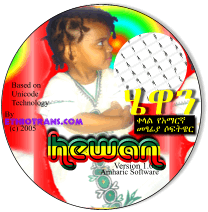By Dana Micucci International Herald Tribune
Published: October 20, 2006
LOS ANGELES Mount Sinai in Egypt is perhaps best known as the site where Moses encountered the burning bush and received the Ten Commandments.
But also in this desolate desert landscape, Justinian, the Byzantine emperor in Constantinople, in the middle of the sixth century ordered the construction of a monastery, St. Catherine's, that has become the oldest continuously operating Christian monastic community. Over the 1,400 years of its existence, St. Catherine's has accumulated one of the finest and most extensive collections of religious icons in the world.
Now, many sacred treasures from the Greek Orthodox monastery are to be shown for the first time abroad. The exhibition "Holy Image, Hallowed Ground: Icons from Sinai" will be on view at the J. Paul Getty Museum in Los Angeles from Nov. 14 to March 4.
Organized by the museum in collaboration with the monastery and the Supreme Council of Antiquities in Egypt, this ambitious exhibition offers a special opportunity to view St. Catherine's icons and manuscripts, and the Getty is its sole location.
The exhibition will feature approximately 43 icons - holy images regarded as sacred in the Eastern Orthodox church - including some of the oldest surviving Byzantine examples, as well as illuminated manuscripts and liturgical objects.
Either commissioned by the monastery or acquired as gifts over the centuries, these works have been used and cared for by generations of monks.
"There is both a hunger for spirituality now and a hesitation on the part of Americans to travel to the Middle East, given recent tensions," said Father Justin of Sinai, the librarian at St. Catherine's. "As privileged custodians of the monastery's ancient spiritual heritage, we feel that we have an obligation to share it with others.
"St. Catherine's has been a beacon of peace and harmony in the region, serving as a place of cultural exchange for countless pilgrims of all faiths. Our Archbishop Damianos here at Sinai recently said that this is one of the messages St. Catherine's has for the world, and it is our hope that this exhibition will reinforce that message."
The monastery has previously loaned a few of its treasures to other museums, notably 10 icons and manuscripts that were included in the New York Metropolitan Museum of Art's blockbuster 1997 exhibition "The Glory of Byzantium." But new conservation technology has only recently made it possible for greater numbers of fragile objects to leave the monastery, according to Justin, who said that the longstanding conservation expertise of the Getty made it an attractive venue.
The icons, most of which are egg tempera paintings on wood panels, and the manuscripts are particularly susceptible to changes in humidity and temperature. The monastery hopes to foster a continuing association with the Getty to secure the future preservation of these objects, Justin said. The Getty Foundation has provided a grant for the conservation of sixth-century mosaics in the apse of the basilica at the monastery, which is a Unesco World Heritage site.
The highlight of the exhibition is a sixth-century icon of the apostle Peter, notable for both its antiquity and its realistic portrait style. A wave of iconoclastic zeal in the eighth and ninth centuries led to the destruction by the Byzantine emperors and their forces of almost all icons in Constantinople, and few examples predating that period have survived. But because of its remote location, St. Catherine's was unaffected by the upheaval.
Because of their fragility, the icons are displayed in a museum-like setting at St. Catherine's, and are removed and placed in the monastery's church on feast days. The pious offer prayers before the images, which are meant to invoke the presence of the saints whom they depict. The tradition of venerating icons also includes touching, kissing and illuminating them with candles and lamps. A documentary film complementing the Getty exhibition explores the religious rites associated with icons during an Orthodox Easter service at St. Catherine's.
"We felt that it was important not only to present the icons and manuscripts as great works of art, but as devotional tools that are an integral part of daily life and ritual at the monastery," said Kristen Collins, an assistant curator at the Getty Museum and co-curator of the exhibition with Robert Nelson, an art history professor at Yale University.
"We want viewers to leave the exhibition both in awe of the breathtaking beauty of these sacred objects and with an understanding of the culture and context in which they exist."
Other exhibition highlights include a rare mosaic icon of the Mother and Child from the late 12th to early 13th century, and an early-13th-century icon depicting scenes from the life of the martyr St. Catherine of Alexandria, the monastery's namesake, whose relics still rest there.
A late 15th-century Greek priest's stole embroidered with feast scenes demonstrates that icons were not only confined to tempera on panel but also adorned liturgical vestments and other surfaces, including architectural elements like church doors and walls.
Among the manuscripts on display are a vibrant illuminated monastic treatise depicting the heavenly ladder to salvation, and the earliest dated gospels for the Arabic Christian population. St. Catherine's is noted for its exceptional library of more than 3,500 ancient religious manuscripts in Greek, Arabic, Georgian, Latin, Hebrew, Polish and Ethiopian, among other languages, recalling the many cultures that the monastery has served.
Even after the arrival of Islam in the region in the seventh century, St. Catherine's continued to attract pilgrims from both East and West, and still does today. The monastery holds a document said to have been dictated by the Prophet Muhammad himself, giving it his protection.
"Christian monks and the local Bedouin Muslims, in particular, have always coexisted here in amazing peace and harmony," Justin said. "Many Bedouins work at the monastery, attend our services on special occasions and even call on our archbishop to settle disputes."
LOS ANGELES Mount Sinai in Egypt is perhaps best known as the site where Moses encountered the burning bush and received the Ten Commandments.
But also in this desolate desert landscape, Justinian, the Byzantine emperor in Constantinople, in the middle of the sixth century ordered the construction of a monastery, St. Catherine's, that has become the oldest continuously operating Christian monastic community. Over the 1,400 years of its existence, St. Catherine's has accumulated one of the finest and most extensive collections of religious icons in the world.
Now, many sacred treasures from the Greek Orthodox monastery are to be shown for the first time abroad. The exhibition "Holy Image, Hallowed Ground: Icons from Sinai" will be on view at the J. Paul Getty Museum in Los Angeles from Nov. 14 to March 4.
Organized by the museum in collaboration with the monastery and the Supreme Council of Antiquities in Egypt, this ambitious exhibition offers a special opportunity to view St. Catherine's icons and manuscripts, and the Getty is its sole location.
The exhibition will feature approximately 43 icons - holy images regarded as sacred in the Eastern Orthodox church - including some of the oldest surviving Byzantine examples, as well as illuminated manuscripts and liturgical objects.
Either commissioned by the monastery or acquired as gifts over the centuries, these works have been used and cared for by generations of monks.
"There is both a hunger for spirituality now and a hesitation on the part of Americans to travel to the Middle East, given recent tensions," said Father Justin of Sinai, the librarian at St. Catherine's. "As privileged custodians of the monastery's ancient spiritual heritage, we feel that we have an obligation to share it with others.
"St. Catherine's has been a beacon of peace and harmony in the region, serving as a place of cultural exchange for countless pilgrims of all faiths. Our Archbishop Damianos here at Sinai recently said that this is one of the messages St. Catherine's has for the world, and it is our hope that this exhibition will reinforce that message."
The monastery has previously loaned a few of its treasures to other museums, notably 10 icons and manuscripts that were included in the New York Metropolitan Museum of Art's blockbuster 1997 exhibition "The Glory of Byzantium." But new conservation technology has only recently made it possible for greater numbers of fragile objects to leave the monastery, according to Justin, who said that the longstanding conservation expertise of the Getty made it an attractive venue.
The icons, most of which are egg tempera paintings on wood panels, and the manuscripts are particularly susceptible to changes in humidity and temperature. The monastery hopes to foster a continuing association with the Getty to secure the future preservation of these objects, Justin said. The Getty Foundation has provided a grant for the conservation of sixth-century mosaics in the apse of the basilica at the monastery, which is a Unesco World Heritage site.
The highlight of the exhibition is a sixth-century icon of the apostle Peter, notable for both its antiquity and its realistic portrait style. A wave of iconoclastic zeal in the eighth and ninth centuries led to the destruction by the Byzantine emperors and their forces of almost all icons in Constantinople, and few examples predating that period have survived. But because of its remote location, St. Catherine's was unaffected by the upheaval.
Because of their fragility, the icons are displayed in a museum-like setting at St. Catherine's, and are removed and placed in the monastery's church on feast days. The pious offer prayers before the images, which are meant to invoke the presence of the saints whom they depict. The tradition of venerating icons also includes touching, kissing and illuminating them with candles and lamps. A documentary film complementing the Getty exhibition explores the religious rites associated with icons during an Orthodox Easter service at St. Catherine's.
"We felt that it was important not only to present the icons and manuscripts as great works of art, but as devotional tools that are an integral part of daily life and ritual at the monastery," said Kristen Collins, an assistant curator at the Getty Museum and co-curator of the exhibition with Robert Nelson, an art history professor at Yale University.
"We want viewers to leave the exhibition both in awe of the breathtaking beauty of these sacred objects and with an understanding of the culture and context in which they exist."
Other exhibition highlights include a rare mosaic icon of the Mother and Child from the late 12th to early 13th century, and an early-13th-century icon depicting scenes from the life of the martyr St. Catherine of Alexandria, the monastery's namesake, whose relics still rest there.
A late 15th-century Greek priest's stole embroidered with feast scenes demonstrates that icons were not only confined to tempera on panel but also adorned liturgical vestments and other surfaces, including architectural elements like church doors and walls.
Among the manuscripts on display are a vibrant illuminated monastic treatise depicting the heavenly ladder to salvation, and the earliest dated gospels for the Arabic Christian population. St. Catherine's is noted for its exceptional library of more than 3,500 ancient religious manuscripts in Greek, Arabic, Georgian, Latin, Hebrew, Polish and Ethiopian, among other languages, recalling the many cultures that the monastery has served.
Even after the arrival of Islam in the region in the seventh century, St. Catherine's continued to attract pilgrims from both East and West, and still does today. The monastery holds a document said to have been dictated by the Prophet Muhammad himself, giving it his protection.
"Christian monks and the local Bedouin Muslims, in particular, have always coexisted here in amazing peace and harmony," Justin said. "Many Bedouins work at the monastery, attend our services on special occasions and even call on our archbishop to settle disputes."
.gif)









